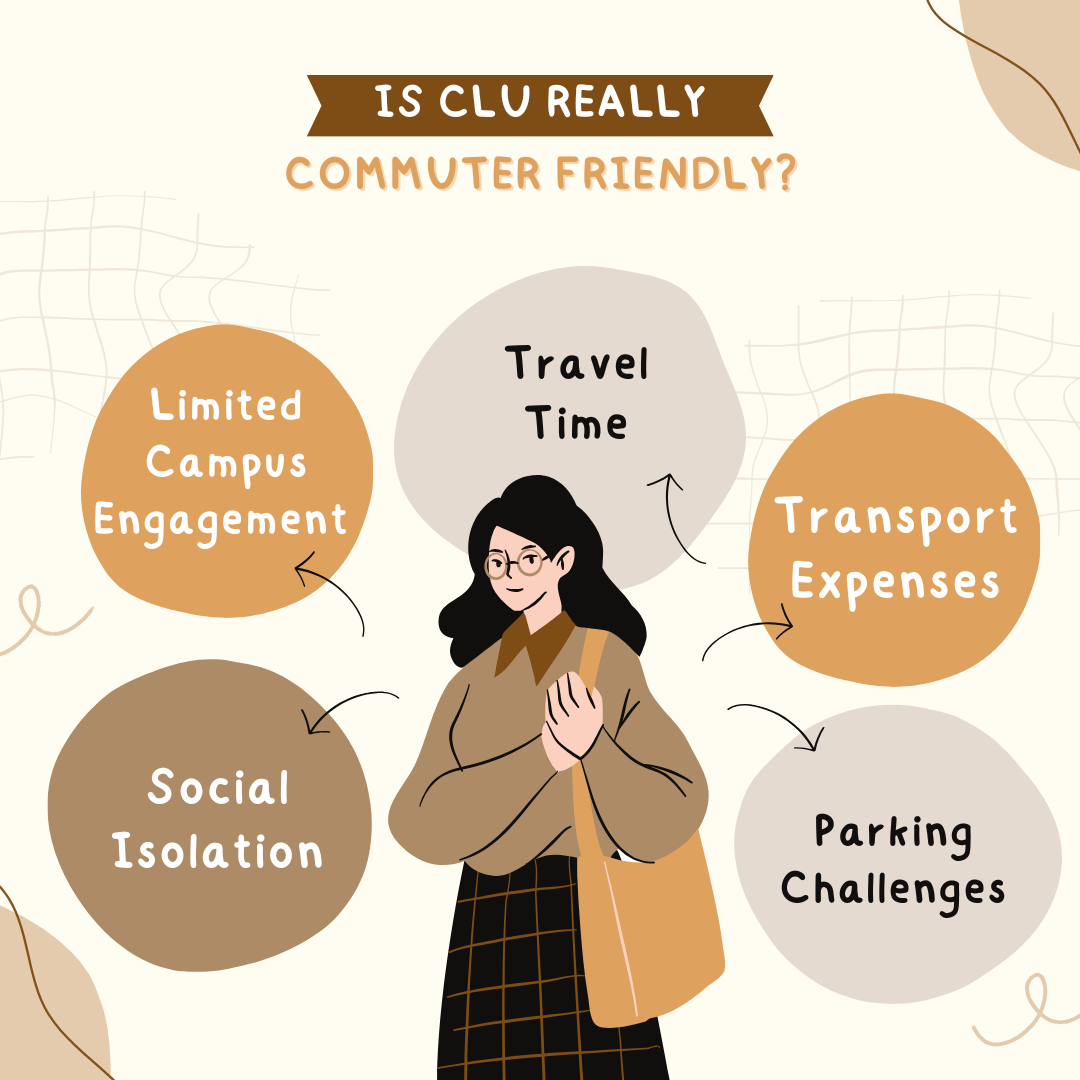As a commuter student who has to drive nearly two hours round trip, five days a week from Santa Paula, I believe California Lutheran University does an inadequate job at accommodating commuter students’ schedules and time on campus.
According to the Cal Lutheran website, 48% of students are commuters. Across the nation; however, this number is 85% according to Inside Higher Ed.
According to an article for the U.S. Department of Education, Maslow’s hierarchy of needs provides a framework to understand student needs. The bottom tier, which emphasizes physiological needs, may be difficult for some commuter students to fulfill as they worry about transportation and are preoccupied with sleep.
These students also may struggle to fulfill the psychological and social tier of Maslow’s hierarchy of needs. Since commuters tend to feel marginalized on campus, these institutions must take extra steps so that they feel a sense of belonging.
I transferred to Cal Lutheran last fall semester from Ventura College and studied abroad last spring semester, making this my second semester on campus. I made it one of my objectives this semester to integrate myself with the school by joining clubs and attending events, but quickly learned how difficult this was due to the times these events are held.
Amanda Janssen, a senior who drives to Cal Lutheran five times a week from Camarillo, said that integrating within the university is attainable if you have the correct attitude.
“I don’t think the commuter lifestyle is for everybody. I am glad I was able to do it because I am saving a lot of money by not living on campus, which I appreciate. I think you really have to put yourself out there and work extra hard to find the opportunities just based on the fact that you don’t live here,” Janssen said.
The hardest part for Janssen, she said, was making friends after her brother graduated from Cal Lutheran.
Janssen believes that something that would improve her time on campus would be to allow commuter students to swipe their IDs into dorm buildings so she can spend time with her friends who live on campus.
“I don’t think it’s a safety issue if you have a Cal Lutheran ID. I understand why the buildings are locked. We don’t want random people to come in there. But if you’re attending the school, I wouldn’t necessarily say you’re a danger … I’m a student here, I should be able to have access,” Janssen said.
Destinny Valencia, a junior and student worker who also commutes from Camarillo, says that she wishes events were held earlier and that there should be more commuter-oriented events on campus.
“Making more events, like, a little earlier in the day and more commuter friendly because I know that we had a Foodie Friday recently for commuters and they gave us a little organizer and that was cool, but I feel like they just do one thing and then they don’t really try to integrate it throughout the year or the semester,” Valencia said.
Commuter students have found that their schedules affect both their academics and social life.
“It makes it hard to attend class sometimes, because sometimes I’ll be 30 minutes late to a class because there’s an accident and I’m like, well, if the class is an hour long, I’m just not going to go … for office hours, classes, everything. Sometimes I don’t want to stay on campus for that four-hour gap, so I’ll just go home and then I’ll miss my club event,” Janssen said.
Valencia said one way the university can make changes to better her experience would be to create more study spots on the west side of campus, opposite of the library and Student Union.
“The library is a good one, but maybe more where you can be a little more social and not outside like the Student Union. Now that the bottom floor is the CCEI, there’s not really space for a lot of commuters, [where they can talk] to each other and especially on the other end of campus, [since] the library and the Student Union are on the same side. So if you want to go somewhere, you have to walk all the way over there,” Valencia said.
The first semester I was here, I only had to come to campus two times a week.The three other days of the week were dedicated to working part-time. Looking back now, I had no idea how much of a privilege that was. With my schedule this semester, I’ve had to change my goal of an in-person internship and job until the semester is over.
Valencia said she works in the library, and despite it being an on-campus job, used to find it difficult to attend her Friday shifts since her only class would frequently get canceled when she was a first-year.
“I only had one class Monday, Wednesday and Friday, which was like a complete waste of time. He would sometimes just cancel class randomly [and] sometimes too late, so I was already there. But other times when he would cancel on time, I would just have to get that shift covered because it wasn’t really worth it for me to drive over there for like a one hour [or] two hour shift,” Valencia said.
Another struggle of commuting is inadequate sleep. While this isn’t unique to commuter students, it does present a more difficult issue. Most days I come home after classes tired after not receiving enough sleep the night before. My weekends are now reserved for sleeping all day.
The Student Union implementing napping pods like California State University, Northridge could dramatically enhance the commuter experience. They are specially designed chairs with ambient features that allow users to take private naps. While they’re certainly not cheap, it is an investment to combat the number of students who sleep in their cars or don’t receive enough healthy hours of sleep.
Then there’s difficulty with finding parking on campus. Valencia suggested that one way the university could better accommodate her schedule is by allowing commuters to park in residence hall lots, where there are often various empty spaces.
“There definitely should be something that they could do with parking … I feel like during peak hours they should allow us to maybe park there or something because I see empty spots and it’s like ‘I can’t park there because it’s resident parking,’” Valencia said.
Ever since construction on the new EV chargers replacing 60 parking spots in the administration lot began, parking for me has been harder than ever and resulted in lengthy walks across campus to reach class.
While it is understandable that it is a complex matter to offer more of the same classes on different days of the week, it would greatly alleviate the strain commuter students deal with.
These problems extend beyond travel time, expenses and scheduling conflicts as everyone has their own unique situation. I hope these commuter experiences grab the attention of Cal Lutheran and reevaluate the conditions this large, yet overseen and disregarded, population faces on a day-to-day basis.




